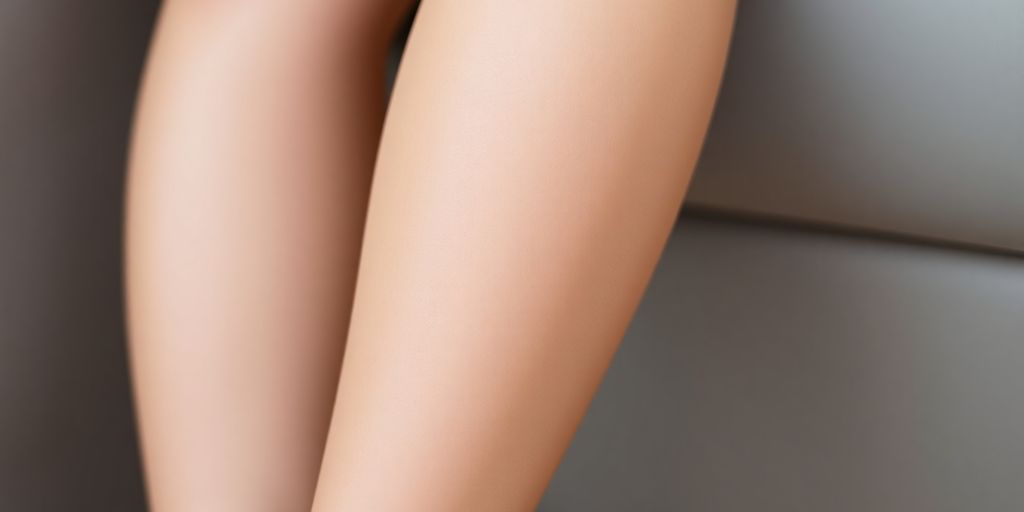Contrary to popular belief, edema is an extremely common condition that affects nearly 20% of the population. Though it is particularly common among the elderly, it can happen at virtually any age. For this reason, it is extremely important to understand the symptoms of edema and how they can be treated and alleviated. Fortunately, if you or someone you love is currently dealing with edema, compression socks could offer a welcome solution.
But what is edema? What does it look like? What does it feel like? How can ankle compression socks help? Finally, where can you get high-quality compression socks for edema?
In today’s guide, we will answer all of these questions and more. So, let’s get started!
What Is Edema?
Edema is a medical condition characterized by swelling and excess fluid trapped in the body's tissues. It typically occurs in the arms, legs, ankles, and feet, but can also affect other parts of the body, such as the face or abdomen. It is frequently referred to as “pitting edema,” because when pressure is applied to the swollen area, it may leave a “pit” or sunken area behind.
It is important to note that there are two main types of edema:
- Peripheral Edema - This type of edema affects the extremities, particularly the legs, ankles, and feet. It is often caused by factors such as standing or sitting for long periods, pregnancy, obesity, or even old age. This is the type of edema that can be alleviated with the help of compression socks.
- Cerebral Edema - This is a more severe form of edema that affects the brain, leading to a potentially life-threatening condition. It can be caused by factors such as head trauma, brain tumors, high altitude, or certain medical conditions. Unfortunately, compression socks cannot help with this form of edema.
Causes of Edema
Some causes of edema, such as aging, are completely outside of your control. Other common causes may develop from unforeseen health complications or chronic conditions. Either way, it’s always good to understand the underlying causes of edema so that you and your healthcare provider can find the best treatment plan for you. Here are some of the most common causes of edema:
- Poor Circulation - When the veins in the legs cannot efficiently return blood to the heart, fluid can accumulate in the tissues, leading to swelling.
- Congestive Heart Failure - A weakened heart may not pump blood effectively, causing fluid to build up in the lungs, abdomen, or extremities.
- Kidney Disease - Impaired kidney function can lead to fluid retention and swelling in the legs, as well as other parts of the body.
- Liver Disease - Liver problems can cause fluid to accumulate in the abdominal cavity or the legs.
- Pregnancy - Hormonal changes and increased blood volume during pregnancy can cause mild edema in the feet and ankles. These changes may continue or even worsen during postpartum.
- Medication - Some medications, such as nonsteroidal anti-inflammatory drugs (NSAIDs), calcium channel blockers, or corticosteroids list edema as a possible side effect.
The best treatment for edema will depend on the underlying cause and may include addressing the root issue, elevating the affected limbs, using compression garments, exercising, or taking diuretics to help the body eliminate excess fluid. Regardless of the cause, you should always talk to a trusted healthcare professional to pursue the appropriate treatment.
How Compression Socks Help With Edema
Compression socks can be an effective tool in managing edema, as they provide pressure to the affected areas, supporting the veins and promoting better blood and fluid circulation. In fact, compression socks can work to reduce and alleviate edema symptoms in a variety of ways, including:
- Graduated Pressure - Compression socks use graduated pressure, which means the pressure is strongest at the lower end of the sock and gradually decreases as it moves up the leg. This pressure gradient helps push blood and fluid upwards, countering the effects of gravity and preventing fluid from accumulating in one spot.
- Improved Circulation - By compressing veins, arteries, and muscles, compression socks improve blood flow, particularly in the lower half of the body. Better circulation helps reduce fluid buildup in the tissues and alleviates some of the discomfort associated with edema.
- Reduced Swelling - The pressure exerted by compression socks on the legs and feet aids in moving excess fluid back into the blood vessels and towards the upper body, reducing swelling in the lower extremities. Compression socks can also prevent even more fluid from flowing into the ankles and feet.
- Lymphatic Support - Compression socks support the lymphatic system, which plays a crucial role in fluid balance and immune function. By promoting lymphatic drainage, compression socks help to remove excess fluid from the affected areas, reducing the swelling and pain caused by edema.
How Long Should Compression Socks Be Worn For Edema?
There’s no perfect answer for how long compression socks should be worn. This applies whether you’re wearing them for edema or for a completely different reason. The duration for which compression socks should be worn to manage edema can vary depending on the severity of the condition, the underlying cause, and the recommendations of your doctor.
In general, for mild to moderate edema, compression socks may be worn throughout the day. You can continue to wear them while you're active, and then remove them at night when you go to bed. Wearing compression socks during the day helps counteract the effects of gravity on fluid accumulation, especially when you're standing or sitting for extended periods of time.
For more severe cases of edema or specific medical conditions, your healthcare professional may recommend a different wearing schedule. They might suggest wearing compression socks for longer durations, or even continuously. This may or may not require you to wear them while you sleep.
It's essential to follow your healthcare provider's advice regarding the use of compression socks, as they can help determine the most appropriate wearing schedule based on your individual needs and condition. Additionally, make sure to choose the right level of compression, fit, and style for optimal comfort and effectiveness. Regularly evaluate the fit of your compression socks, as they may need replacement over time, particularly if your condition changes.
The Best Compression Socks For Edema
Thankfully, there are ways to alleviate the pain, discomfort, and swelling caused by edema. At Compression Health, we offer top-of-the-line compression socks for edema, specifically designed to provide optimal pressure and comfort. Not only can our compression socks improve your circulatory and lymphatic systems, but they can also make it easier to go about your day. If edema is making it difficult to stand, walk, or be physically active, compression socks could be the perfect solution.
However, you should always talk to your doctor before making a decision. Compression socks are not a cure for edema, but if your doctor believes they could help your condition, we have high-quality compression socks to meet your needs. Be sure to look through our catalog of compression wear and compression socks to discover what they can do for you.
We hope you found this guide on compression socks for edema both useful and informative! Are you currently in the market for compression socks or other compression wear? If so, be sure to reach out to Compression Health today!




Share:
Compression Socks For Diabetics
Compression Socks For Plantar Fasciitis